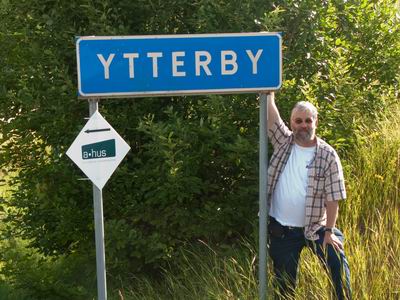Elementymology & Elements Multidict (original) (raw)
Elementymology & Elements Multidict
|  | by Peter van der Krogt | |
| ----------------------------------------------------------------------------------------------------------- | ------------------------ | |
| by Peter van der Krogt | |
| ----------------------------------------------------------------------------------------------------------- | ------------------------ | |
This is THE web site for element names. You will find this site useful not only for the origins (etymology) of element names, but also for translations of each element name into numerous other languages.
Peter van der Krogt mixes science, history, and etymology to create an exhaustive database of the elements. This site is fascinating and brings a human element to a table of symbols and numbers.
(Bionic Teaching)
| Introduction I am not a chemist, but a (map) historian much interested in the origin of names. On several of the sites listing elements you will find historical notes and often an explanation of the origin of element names. However, mostly, the authors of these pages copy each other and the same errors and mistakes are repeated. I tried to do some new etymological research on the element names, and find the original articles where the discoverer of a new element announced his find and explained the naming. If you have remarks, corrections, additions, etc. please contact me. What do you find in this web site? Elementymology: History of the elements and their namesClicking the small table to the right, or the tab Elements above will bring you to the 'Element Pages'. These are 120 pages, each describing one element. You'll find: A history of the discovery and naming of the element. In this text the emphasis is on the naming. This is mainly based on the works by Weeks and Gmelin (see page Sources). The chemical process and other chemical information is kept very short or is not present at all.A list of the names of the element in 98 languages.At least one illustration: the appearance of the element, a mineral in which the element occurs, a portrait of the discoverer, or an example of the use of the element. Elements Multidict: Element names in 98 languagesClick on the tab Languages and you'll get a list of the languages included. You may also click on Periodic Table for a clickable name origin periodic table in 98 languages, or on Elements for alphabatic or numeric lists in the different languages. |  Clickable Periodic TableMove your mouse over it and the names of the elements appear in: English Clickable Periodic TableMove your mouse over it and the names of the elements appear in: English |
|---|
Alphabetical lists
Click on Indexes for:
» Chronology of the discovery
» Persons involved in the discovery and naming
» Name origin
» Names that did not make it
Specials
Click on Specials for the history of Chemical symbols, how to spell Mendeleev, Sellars' Chemistianity, the naming of the rare earths, and much more you'll find under the 'Specials' tab.


Peter van der Krogt in Strontian (18 September 2004), the town where the element Strontium got its name from, and in Ytterby, Sweden (21 July 2009), the town where Erbium, Terbium, Ytterbium, and Yttrium got their name from (more photos here)
Latest updates

13 June 2016: Today I read in the newspaper four new elements were named. Time to update the site again... Earlier this year I Tom Sharp has read the whole text and has sent me many typos and other errors. I have corrected this. Further I made some changes in the elements in Russian and Esperanto. The last four year I received more additions and correction, I hope to add these in the near future...
22 October 2012: Despite the new structure I didn't have the time for updates. Today I added two newly named elements, Livermorium and Flerovium, and some small corrections were made.
January 2010: After a standstill of a few years finally a major update and a complete restructuring of the site. Because the pages are now programmed in PHP – thanks to my brother René van der Krogt – and the element data and languages are in a database, it will be easier to maintain the site in future.
31 December 2009: Several small changes and photos of the Ytterby Mine added.
29 December 2009: Element 112 named Copernicium.
3 May 2009: Work, work work, and another website take most of my time. I still have the intention to update the site. I am now planning to have the dictionary in a database structure, so it will be easier to update the site..
Acknowledgments
First, I would like to thank the persons and companies who gave me permission to use their photos or other information:
- Thomas Witzke, Institut für Mineralogie und Lagerstättenlehre der Rheinisch-Westfälische Technische Hochschule, Aachen.
- John Veevaert, Trinity Mineral Company, Weaverville, Calif.
- Steve Covey, Amethyst Galleries, Inc., Dublin, Ohio.
- Justin D. Urgitis, photos from his element collection.
- John P. Pratt, memory pegs for English elements names and chemical symbols
Furthermore, chemists and other interested persons of all over the world helped me with additions and corrections in the history and naming of elements:
- Zdenek Cimpl from Frenstat pod Radhostem, Czech Republic, Febr. 2004.
- Marco Fontani, Univ. of Florence, Italy, Febr. 2003.
- Krzysztof W. Zielinski from Poland, Jan. 2003.
- Curt Fischer from Tokyo, Japan, Dec. 2002.
- Valerii Bashevoy, from the JINR, Dubna, Russia, Dec. 2002.
- Thomas Witzke, Univ. of Aachen, Germany, July 2002.
- Timur Labutin, Moscow State University, Russia, June 2002.
- Pekka Pyykko, University of Helsinki, Finland, Oct. 2000.
What do you NOT find in this web site?
Scientific data (chemical and physical) of the elements. There are hundreds of website presenting that information. A few of them:
copyright © 1999-2010 by Peter van der Krogt


